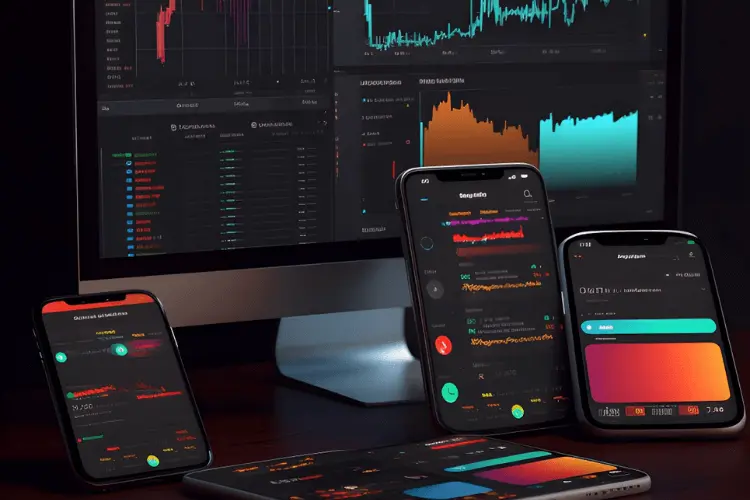Introduction
In the intricate world of the Forex market, slippage stands as a prevalent yet often misunderstood phenomenon. For traders, a deep comprehension of slippage, especially slippage in forex trading, is pivotal to maneuvering the complex waters of currency exchange effectively.
Understanding Slippage in the Forex Market
Slippage in forex arises when the actual execution price deviates from the expected price of a trade order. Imagine placing an order at a specified price, but due to market volatility or other factors, the order is executed at a different price. This price difference, be it favorable or adverse, constitutes slippage. Traders might encounter negative slippage when the executed price is less favorable than the requested price or positive slippage when they obtain a more favorable price than anticipated.
To put it in perspective. In the realm of forex trading, where market moves are rapid and the ask price and bid price fluctuate constantly, slippage occurs frequently, making it an essential topic for traders.
Triggers for Slippage in Forex Trading
1. Market Volatility
Volatile markets, often spurred by major economic announcements or unexpected news events, can cause swift price movements. These rapid shifts might leap over a trader’s desired price, causing slippage.
2. Liquidity Challenges
In financial markets, the liquidity level dictates the ease with which assets can be traded without significantly impacting the price. During periods of low liquidity, the absence of orders at the intended execution price can lead to slippage.
3. Order Types: Market Orders vs. Limit Orders
Market orders, aiming for immediate execution at the current market price, can be susceptible to slippage, especially during heightened volatility. Conversely, limit orders, which target a specific price or better, provide greater price control but might not always be fulfilled.
4. Broker-Related Technicalities
Broker-induced delays, system glitches, or lag in execution speed can further accentuate the risk of slippage.
1. Timing Your Trades
One strategy to avoid slippage is to trade during periods of high liquidity and low volatility. This often aligns with overlaps of major currency pairs trading sessions.
2. Opting for Limit Orders
Utilizing limit orders, rather than market orders, allows traders to set a maximum acceptable slippage, reducing unexpected surprises.
3. Knowledge of Currency Pairs’ Liquidity
Major currency pairs like EUR/USD or GBP/USD usually offer higher liquidity compared to less popular currency pairs. Trading in highly liquid markets can help minimize slippage risk.
4. Associating with Credible Brokers
Partnering with reputable brokers ensures reduced technical snags, enhancing the execution speed and accuracy of trades.
Success Stories from Applying Slippage Management Techniques
1. Maximizing Profits through Timing
John, a seasoned Forex trader, always kept an eye on the market’s liquidity. Having faced substantial losses during major economic announcements in the past, he decided to adapt his strategy. By trading during the overlapping hours of the London and New York sessions, he capitalized on the high liquidity, ensuring his orders were executed close to his intended prices. This shift in strategy not only helped him avoid significant slippage but also increased his profit margins.
2. Limit Orders Lead to Unexpected Gains
Sofia, a newbie in Forex trading, had just attended a webinar on the importance of order types. Acting on her newfound knowledge, she began using limit orders instead of market orders. One day, when the EUR/USD pair was particularly volatile, her limit order got executed at a price much better than expected, leading to an unexpected gain. This success story reinforced her belief in the power of limit orders to minimize negative slippage and maximize returns.
3. Navigating Currency Liquidity
Liam had a penchant for exotic currency pairs, lured by their potential for high returns. However, after facing repeated slippage, he decided to shift his focus to major currency pairs like EUR/USD and GBP/USD. The improved liquidity in these pairs ensured that his trades were executed more accurately, reducing slippage and boosting his profits. Today, Liam stands as a testimony to the importance of understanding currency pair liquidity.
4. Partnering with the Right Broker Pays Off
After facing multiple technical glitches with her previous broker, Mia decided it was time for a change. She switched to a more reputable broker known for its reliable trading platform and swift execution speeds. The change was immediate. Not only did she experience fewer technical issues, but the speed at which her orders were executed reduced the slippage she experienced, proving that the right broker can indeed make all the difference.
5. The Combined Strategy Approach
Carlos, an avid Forex trader, decided to combine all the techniques he had learned. He traded during periods of high liquidity, used limit orders, focused on major currency pairs, and collaborated with a top-tier broker. The result? Carlos experienced a series of successful trades with minimal slippage, showcasing the power of a holistic approach to managing slippage in Forex trading.
Innovative Approaches to Minimize Slippage Risk
Utilizing AI Predictive Analytics
Jack, an experienced forex trader, had always been curious about technology’s potential in trading. He teamed up with a software developer friend to create an AI tool that predicted market movements based on historical data, economic indicators, and social media sentiment. With this tool, Jack could preemptively adjust his trading strategy, minimizing the risk of negative slippage. Over six months, his platform’s predictions, combined with his knowledge, resulted in significantly reduced slippage instances, even during highly volatile events.
Diversifying with Exotic Currency Pairs
Sarah, after facing slippage on major currency pairs, decided to venture into exotic currency pairs. While these pairs traditionally have less liquidity, Sarah’s extensive investment research and understanding of local economic factors allowed her to foresee market moves. With tailored strategies for each pair, she efficiently managed the slippage risk. To everyone’s surprise, within a year, Sarah’s profits from exotics surpassed her earnings from major pairs, proving that with the right approach, unconventional routes can yield success.
Collaborative Decentralized Trading Platforms
Alex stumbled upon a decentralized forex trading platform, which boasted a collaborative approach. Here, market participants could share real-time data, insights, and strategies. Intrigued, Alex joined and soon realized that this collective intelligence approach enabled him to anticipate price movements and reduce slippage. This peer-to-peer network, devoid of traditional broker interference, enhanced execution speed and reduced technical glitches. By the end of the first quarter, Alex had not only minimized slippage but also expanded his trading network and knowledge base.
In the ever-evolving forex landscape, the above stories underscore the significance of out-of-the-box thinking. Embracing innovative methods, staying updated, and a willingness to adapt can lead traders to find unique solutions for age-old challenges like slippage.
Conclusion
In the dynamic world of forex, where price changes are the norm, understanding the intricacies of slippage and strategies to mitigate its impact can spell the difference between success and setback. As market participants continually evolve, integrating the knowledge of slippage into trading strategies becomes paramount for consistent success.




